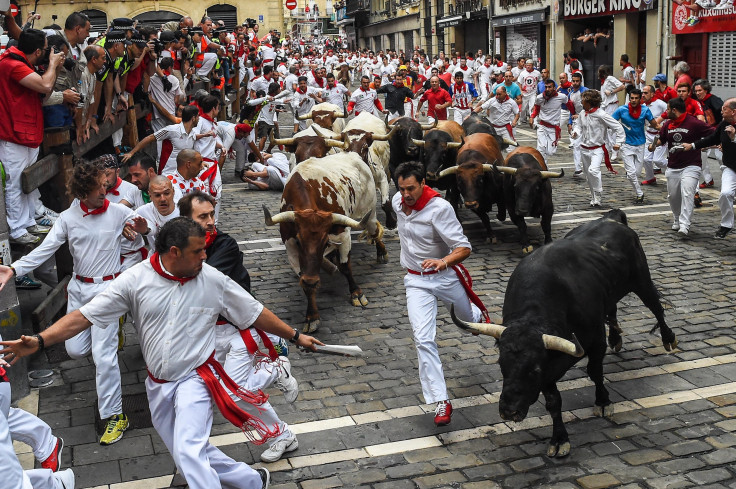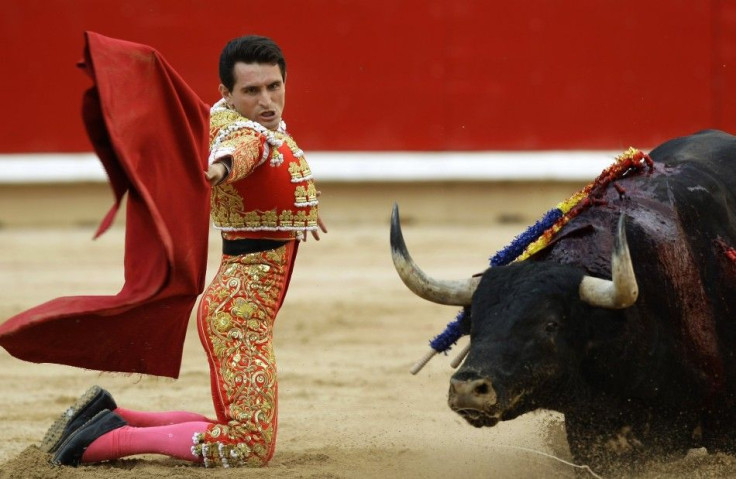San Fermin’s Century-old Festival Put Off Indefinitely As Spain Battles Coronavirus Pandemic

KEY POINTS
- Pamplona’s bull-running was suspended indefinitely due to coronavirus pandemic
- The tradition, which is believed to have started back in the 13th century, is done in honor of St. Fermin, the city’s patron saint
- Six bull and six oxen are released at exactly 8 a.m. and will run through a course leading to the bullfighting ring
- This century-old tradition, starting every July 7 and could last up to a week, is visited by thousands of people every year
The running of bulls in Pamplona, Spain to celebrate the feast of St. Fermin, is reportedly suspended indefinitely amid the coronavirus pandemic.

Pamplona Mayor Ana Elizalde announced the suspension of the bull-running activity with sadness. Mayor Elizalde said that although it’s “unlikely” for the City of Pamplona to celebrate the century-old tradition, they would still see how the events evolve, The Guardian reported.
Every July, bulls are released in the streets of Pamplona, Spain to celebrate and honor St. Fermin, who is the patron saint of the said city. The running of the bulls began as a way to move the fighting bulls from “Pamplona’s corral” to its bullfighting ring, Time reported. Believed to have started back in the 13th century, but the practice continued uninterruptedly in 1952 when the festival was reportedly moved from September to July.
Every 7th of July until the festival ends, hundreds of thousands of people —locals and tourists— gather together to witness this famous occasion, where six bulls are released at exactly 8 in the morning, together with six oxen that would help the herd stay on course. After two rockets are fired, the participants run for 875 meters. The run usually lasts under four minutes but on some occasions, it can last even longer, Bull Run Pamplona reported.

What happens after the running bulls though?
There had been several misconceptions about bullfighting. Apparently, it isn’t just people fighting against bulls or vice versa. Steps to bullfighting were explained in the video report of Vox.
The first of the three steps, as depicted on the video, features a man riding a blinded folded horse. The man stabbed a spear to the bull’s back muscles so the mighty beast would bleed profusely. As a result, the bulls would get weaker and light-headed. In addition, the bull won’t be able to lift its head up because its back muscles were severed.
The second step involved harpoons, which would result in more bleeding until finally, the sword which would reportedly deliver the last blow to the bull. It may have been a century-old tradition but there had been controversies surrounding this practice not only in Spain but in Spanish-speaking places.

In accordance with the recommendation of the World Health Organization to strictly adhere to social distancing as a preventive measure against coronavirus, the bull running tradition was suspended. The aim is to spare people from contracting the deadly disease but many believed that the lives of bulls were spared too because of the pandemic.
Worldometer data on coronavirus depicted 208,389 coronavirus cases in Spain, to date. Confirmed deaths are now at 21,717, while 85,915 people were able to recover.
© Copyright IBTimes 2025. All rights reserved.





















